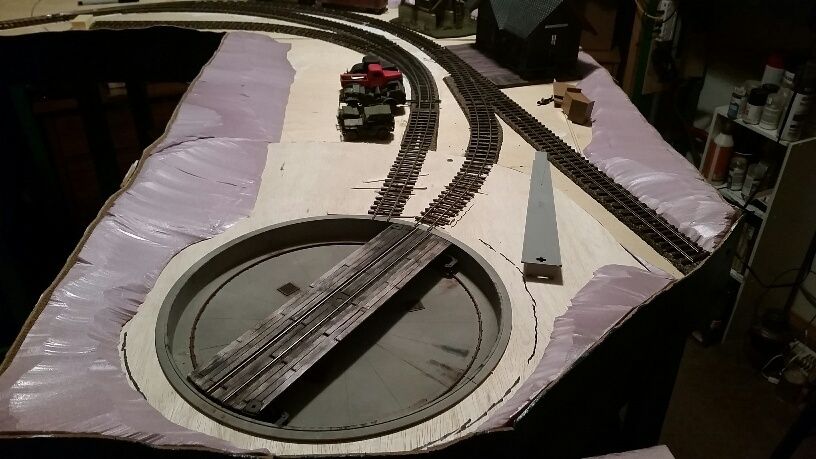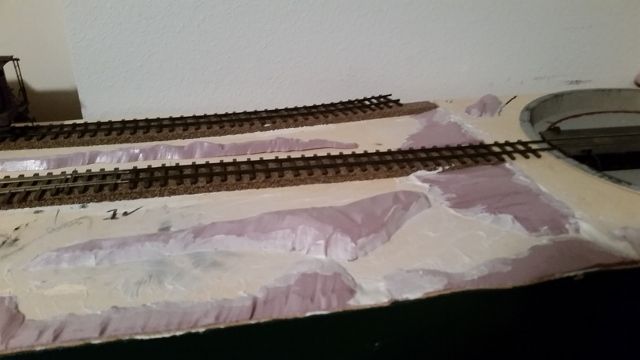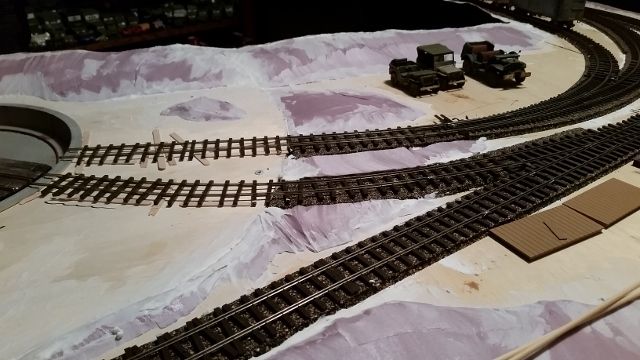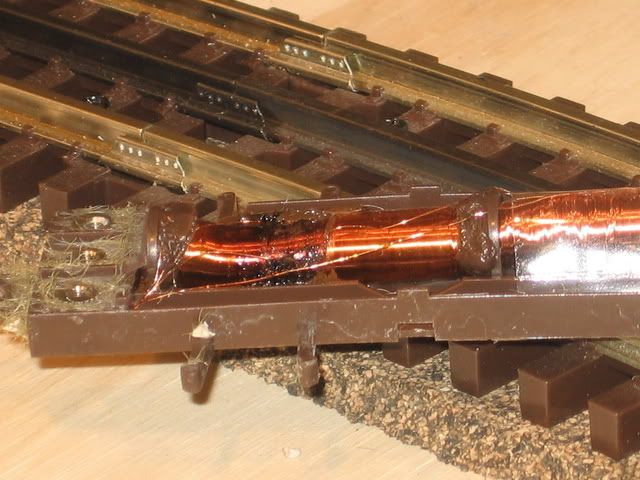I am posting this after another post I made regarding a small fire on a layout and the proper extinguishers to use. While I am it I will state that the pink foam recommended in many modeling videos to glue to a 4 X 8 sheet is DEADLY if it catches fire. It produces a dense, black, choking smoke that will reduce visibility in the room to zero in minutes. You won't be able to see your hand in front of your face. And it is difficult to extinguish. Burn a piece in your yard to see what I mean.
Replies sorted oldest to newest
Not sure about the foam material used in the layouts but some foams contain or did contain isocyanates that give off cyanide gas when burned. Someone should check that out.
Interesting...i would have thought fire standards would be higher considering it is used in house construction. Is the blue any different?
Tommy,
Thank you for taking the time to post today. Have to say I never thought about the pink foam as a hazard until your post. Maybe this will prevent an accident on someone's layout.
Interesting. I thought foam boards had to meet rigid fire standards, due to the fact that it's used as insulation inside of homes. As the Poster above noted what about the blue boards?
I posted this thread in 2013...
https://ogrforum.com/t...lmost-lost-the-house
Some of the photo links may not work.
SD60M posted:I posted this thread in 2013...
https://ogrforum.com/t...lmost-lost-the-house
Some of the photo links may not work.
I had no idea foam board was so flammable! Many model railroaders use foam on modular layouts. If you cover the foam with a plaster is that safer ?
I still do not understand how companies can sell and untilize foam board when almost all new home construction has foam board built in.
SD60M posted:I posted this thread in 2013...
https://ogrforum.com/t...lmost-lost-the-house
Some of the photo links may not work.
I remember that topic very well. Scary stuff! What ever became of that layout?
Willygee, that foam insulation is typically used to waterproof and insulate foundation walls in northern climates, so fire isn't really a concern, when used as intended. Model railroaders adopted it soon after it came on the market, because it is light weight and easy to work with. Blue and pink are the same stuff, there's even a green. Different manufacturers.
I plan to use small amounts of it in my scenery, but will also keep it away from any potential ignition sources. I also have four ABC type CO2 fire extinguishers in my train room. I really don't want to lose my layout, not to mention my house.
Big Boy...that layout is still up there...not that much further along than it was back then...the layout was patched and cleaned up....there are still some traces of it around that area...that damaged UP tunnel motor has never been recovered by "the railroad."
Local code calls for all foam to be covered with 1/2" drywall. No exposed foam.
I could see foam being the new "asbestos" in time to come.
What about Homasote? IS it also a danger?
Bill
One commercial job, I was working had an issue with fire ratings and the second layer of 5/8" drywall board was added to all exterior walls. There is talk of 1 and 2 hr ratings. I assumed it had to do with the Iso-board screwed to the exterior before brick was applied.
Basement residential garage ceilings usually have a different board that is fire rated. Also keep in mind that many drywall sheets are not fire rated.
Spent a lot of time above ceilings adding special fire rated caulking to wire penetrations through walls.
Basement residential garage ceilings usually have a different board that is fire rated. Also keep in mind that many drywall sheets are not fire rated
We recently had some work done on our house. The sheetrock in the garage had to be thicker than the stuff that is typically used on interior walls. This was due to our fire code.
Regarding blue versus pink insulation boards..... I thought I read that the only difference was the brand.
Its all made from polystyrene so its plastic and hence comes with all of the qualities of plastic including toxic fumes when burned
All of this stuff is flammable and does produce nasty smoke. Most building codes do allow for its use but it must be covered in habitable areas with sheetrock. Even 1/2" sheetrock will provide adequate fire resistance to allow time for occupants to safely exit a home in case of fire. The thicker boards (5/8" -1") can provide up to a 2-hour rating. The gypsum in the board will not burn, only the paper does. Plaster applied on the foam will provide fire resistance too.
I went old-school, plywood and cork road bed on my layout, much safer.
Just curious, has anybody run into a problem with traditional "O" gauge or "O27" gauge igniting a fire?
I am wondering because the rails are joined up higher, in relatively open air, so it seems like while a connection could get hot, it probably would not ignite anything.
I am guessing that there is more risk with Super "O" and Fastrack.
ogaugenut posted:What about Homasote? IS it also a danger?
Bill
It is all about autoignition temperature. Homasote, a paper product, takes a lot more heat to ignite, than does the foam, which is a hydrocarbon.
This is one of those topics that really makes you stop and think. My holiday layout is made of all light weight materials including styrofoam. I never even gave "fire hazard" a thought until now.
But with that said, I do believe with proper electrical, our layouts will remain safe. Back in the day, they didn't have such flammable man made materials. They used heavy gauge metal for track rails. So even the slow acting breaker in a ZW wasn't an issue. Today, in an attempt to make our 3 rail pikes more realistic, we use much finer material for track. I believe using correctly sized wire and properly fused feeds is a requirement today. New power from Lionel and MTH are as safe as can be. If you are using older power, you can't just hook up 22 gauge wire to a lockon and go...
I read the OP's original post and can honestly say I've never seen anything like that with my many layouts over the years. But it also goes to show you how unpredictable electricity can be when conditions are right for such things...
Tony
When I attend a Greenberg or Amherst show many of the modular layouts such as the Ntrak and the HO Marklin European Train Ethusiasts are mainly foam bases.
Is blue board different then pink board in terms of fire risk?
Does painting or putting plaster on the board reduce the risk of fire?
I wonder how many modelers have no idea of the foam risk. I certainly never put a thought to it.
Some of the layouts I've visited looked like a sprinkler system should be installed over them. Periodically homeowner insurance companies will do walk through home inspection, especially after a claim, and will drop your insurance if you don't comply to their request within 60 days, if they find something they don't like. In the last few years they have become very picky. They will now drop you if you own your own propane tank and will only insure a home if the tank is rented. So avoid changing insurance companies just because your premium went up a bit, because a new provider will send an inspector out within the first six months to have a look at what their insuring. Keep a king sized bed sheet in the layout room so that if that knock comes to your door, you can quickly cover the layout and say it's not used anymore. God forbid if a layout would be featured on that TV commercial with the insurance company's museum stories.
Seacoast posted:Is blue board different then pink board in terms of fire risk?
No, same stuff.
Does painting or putting plaster on the board reduce the risk of fire?
Plaster will provide some protection, paint not so much.
One thing that might have prevented SD60M's fire would have been placing a piece of sheet metal under all the switch machines. It would have kept the direct heat of the melting coil away from the foam, and acted as a heat sink to help dissipate it.
What about those foam risers? I'm sure they are as flammable.
When I attend a Greenberg or Amherst show many of the modular layouts such as the Ntrak and the HO Marklin European Train Ethusiasts are mainly foam bases.
What sort of amperage runs through those layouts? I bet it's nothing close to what an "O" gauge layout draws.
ogaugenut posted:What about Homasote? IS it also a danger?
Bill
Found this in a search:
http://epsindustry.org/buildin...tion/fire-resistance
"Under certain fire conditions, EPS will ignite when exposed to an open flame. The transfer ignition temperature is typically 680°F (360°C). "
http://www.homasote.com/assets...omasote_440_msds.pdf
"Sect ion IX – Physical and Chemical Properties Form: solid board
Odor: none, Melting Point: na, Ignition Temperature: 450°F
As a On30 modeler, I don't think the currents going through the rails are enough to cause a fire as it's the same as an HO layout?
I never laid track over top of the foam, and only did shapes along the right of way and is adjacent to the track in a few spots but never touching it, so even if the track did something odd, it shouldn't do much to the foam (no more so than to the cork or wood underneath, anyway). I also didn't use large piles of the stuff:



I used a wire cutter on the foam several times and looked into it, and the fumes from using a hot wire cutter aren't toxic from the MDS (or whatever that acronym is) sheets I read. I don't recall anything about exposure to open flames, though.
The bottom line is that layouts are filled with stuff that'll burn easily, mostly the wood used in benchwork.
I took these pictures of an Atlas O switch motor that fried. Enough heat to cause some damage. I went back and re-thought my accessory power and track power with lower amperage fuses.


Hot enough that the cork stuck to the bottom of the switch motor.

Stuck switch button. Eventually added 6924 Switch motor relay boards that have a built-in time out feature. And then added fuses to the 6924 relay board, track power routing circuits. I fried a couple of 6924 relay boards.
Be careful out there.
Mike CT ![]()



